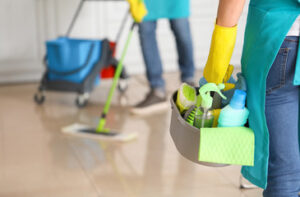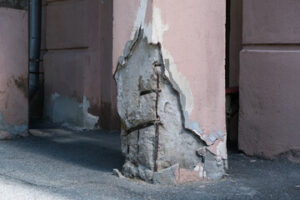Deep tissue massage involves firm pressure to release chronic muscle knots. It can cause some pain, but it is typically a good hurt, like the kind you would feel after a hard workout. If you experience any pain that is outside of your comfort range, inform the therapist immediately.

You may also experience a headache and feeling nauseous after the massage, as the deep pressure releases many toxins into your bloodstream. Stay hydrated and these symptoms will ease. Visit their Website to learn more.
Deep Tissue Massage is a great way to relax and improve your overall health. It reduces stress and tension, boosts circulation, soothes tense muscles, and can help heal chronic pain issues such as plantar fasciitis or sciatica. It can also increase flexibility and range of motion in your joints. However, it’s important to remember that deep tissue massage is not a panacea, and it should be used in conjunction with other treatments, including physical therapy and chiropractic.
Before you receive a deep tissue massage, it’s important to communicate with the therapist about any specific areas of pain or discomfort. The therapist can then adjust their technique to make sure that you’re comfortable. It’s also a good idea to drink plenty of water before and after the treatment. This will help to flush out any toxins that may have been released during the massage. It’s also normal to experience some soreness after a deep tissue massage, but this should subside within a day or two. This is usually caused by the release of lactic acid and other toxins, which can cause pain.
Depending on state regulations, it’s essential to find a qualified massage therapist. Make sure you check online reviews and talk to friends and family members about their experiences. In addition, you can ask about the therapist’s education, certification, and training. A licensed massage therapist can offer you a variety of treatments, including neuromuscular therapy, trigger point therapy, friction, myofascial release, and stretching.
It’s also important to choose a time that works well for you. Ideally, you should get a massage in the morning, as the body is at its most relaxed and receptive. This will help to ease your pain and tension throughout the day, and it can also help to improve your posture and sleep quality.
The key to long-term benefits from deep tissue massage is consistency and adherence to long-term practices. These can include avoiding stress-inducing activities, prioritizing rest and nutrition, managing soreness, and identifying and managing chronic pain triggers. It’s also helpful to get a massage at least once per month, which can reduce muscle tightness and promote relaxation.
It’s a great way to relieve pain
Deep tissue massage targets muscle tissues that are tight or injured, and helps release them. It also stimulates the circulation of blood in the targeted areas, which can reduce pain and increase flexibility. In addition, the massage improves the range of motion of the muscles and tendons. This can result in improved sports performance and faster healing of injuries. The massage can also help lower blood pressure. However, if you have an existing health condition, you should talk to your doctor before undergoing a deep tissue massage.
If you are a beginner to this massage, it is best to start with lighter pressure and slowly move towards more intense pressure. The massage therapist will be able to gauge the amount of pressure that is appropriate for you. The more you communicate with the massage therapist, the better they will be able to help you. It is important to tell them if you are uncomfortable with any of the pressure or techniques.
After the treatment, you may feel sore for a few days. This is normal and indicates that the massage has penetrated deeper layers of muscle tissue. It is important to drink water and take a hot bath to help alleviate the discomfort. In most cases, the soreness will subside within a day or two.
In addition to relieving pain, massages can also help boost your immunity and immune system by stimulating the circulatory and lymphatic systems. In addition, the massage can help improve your mood by releasing endorphins. This can be beneficial for those who have depression or anxiety, and it can also reduce symptoms of PTSD and PTSD.
It is important to hydrate before and after the massage. This will ensure that you are getting the most out of it. It is also a good idea to wear loose-fitting clothing, as this will make it easier for the massage therapist to reach all of your muscles. In addition, it is helpful to drink water after the massage, as this will help to flush out any toxins from your body. You may experience some bruising and swelling after the massage, but these side effects are normal.
It’s a great way to release tension
Deep Tissue Massage has numerous benefits, including pain relief, improved flexibility, and reduced inflammation. This type of massage also stimulates blood flow, allowing your muscles to heal faster. Studies have shown that it can help lower blood pressure as well. It’s important to communicate with your therapist throughout the massage, so they can adjust the pressure according to your comfort level.
During a deep tissue massage, your therapist might apply pressure to the length of the muscle fibers or use friction techniques. They might use their thumbs or elbows to “strip” along the muscle, which helps release tightness. They might also apply cross-fiber friction to break up adhesions and knots. If you feel a sharp pain, it’s important to let your therapist know so they can ease up on the pressure. It’s better to experience a dull ache than a sharp, shooting pain.
After a deep tissue massage, you might experience some soreness for a few days. This is normal, but it’s important to drink plenty of water and take it easy. It’s also a good idea to stretch and use a foam roller to help with the soreness.
It’s best to get a deep tissue massage in the morning, as your body is more receptive to it at that time. It’s also important to avoid getting a massage on bruises, inflamed or infected skin, open wounds, or areas with a fracture or aneurysm. You should also avoid getting a deep tissue massage if you have a blood clotting disorder, high blood pressure, or osteoporosis.
While a deep tissue massage can be uncomfortable, it should never be painful. If you experience any sharp or shooting pain, it’s a red flag that the massage is too intense. It’s also important to avoid clenching and tightening your muscles after a deep tissue massage, as this can lead to increased soreness and a longer recovery time. Instead, try to relax and rest as much as possible, and drink lots of water after the massage to stay hydrated. This will help to flush out the toxins released during your session and reduce post-massage soreness.
It’s a great way to rejuvenate
Deep Tissue Massage can help break up scar tissue and improve the elasticity of the soft tissues of the body. This helps to improve the range of motion and decrease pain. It also increases the flow of oxygen and nutrients to the muscles, which helps with healing after injuries or intense workouts. The massage can cause some discomfort at times, but it should feel like “delicious pain,” not “scary pain.” The therapist will adjust the pressure and technique to your comfort level. It’s important to drink plenty of water after the session to help eliminate toxins from the body.
The benefits of a deep tissue massage can last from hours to weeks, but the best way to maintain the results is to schedule regular sessions. In addition, consuming a healthy diet and following any aftercare recommendations from your massage therapist can also contribute to longer-lasting relief.
To get the most out of your session, communicate with your therapist before the treatment begins. Let them know what areas are tight or sore, and discuss any injuries or medical conditions. It’s important to share this information with your therapist, as they will use it to guide their work. You can also ask for more or less pressure, or to switch techniques.
After a deep tissue massage, you may experience some soreness or stiffness for a few days. This is normal and a sign that the massage penetrated deeper muscle layers. It’s important to drink plenty of fluids after a massage, and avoid excessive exercise or a hard workout.
Deep tissue massage can be beneficial to anyone, but it’s especially helpful for athletes and people who have physically demanding jobs. The increased blood flow to the muscles promotes healing and reduces inflammation. It can even boost your immune system and speed up recovery from injury. In addition, it can reduce stress and anxiety and increase the production of endorphins. These are natural chemicals that can reduce stress and improve your overall health and well-being.


